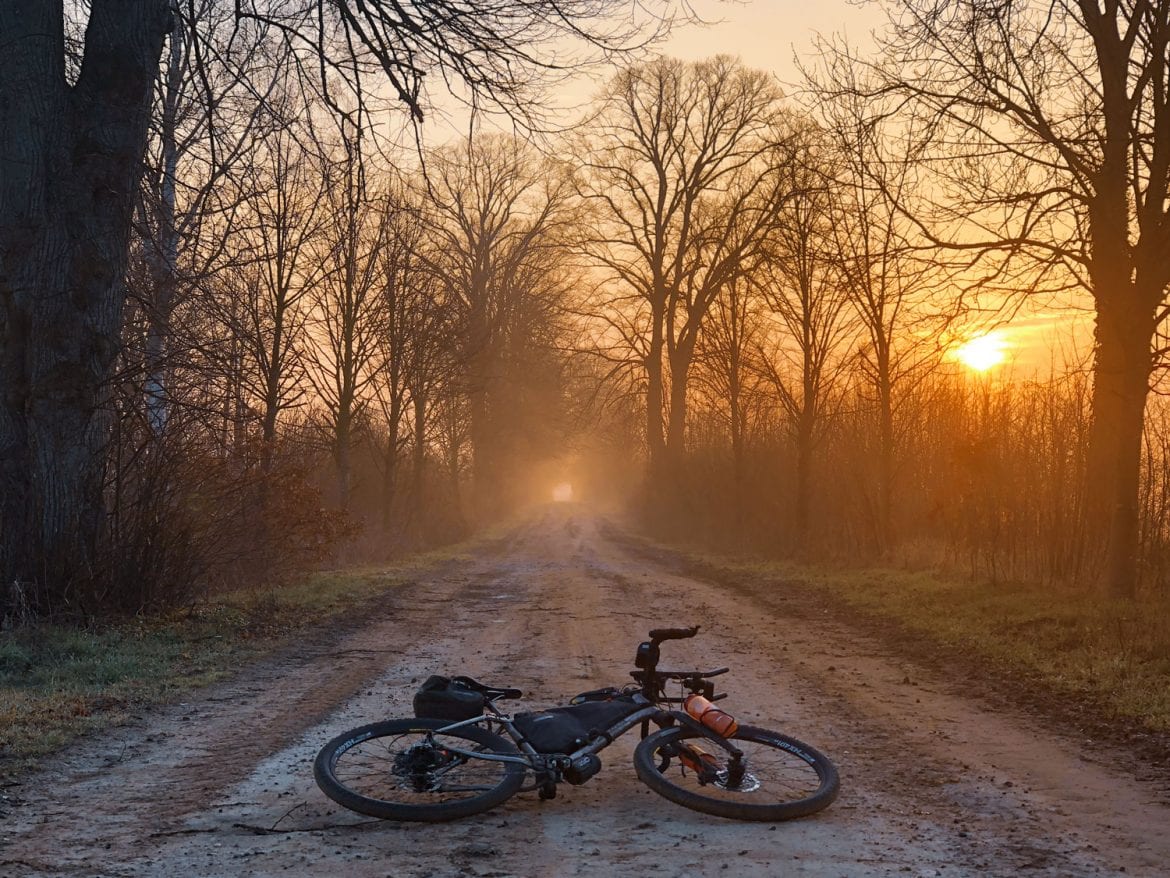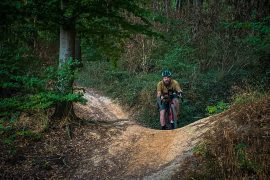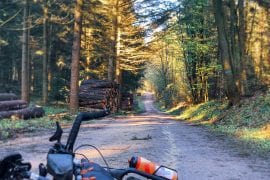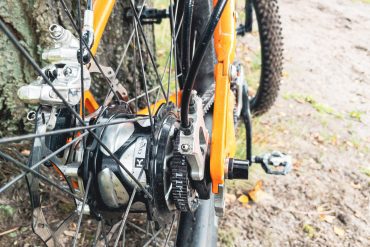Actually I didn’t want to participate and actually I didn’t plan to ride such a distance in one piece right now. I had rather planned to do smaller 250km laps as part of my preparation for the Silk Road Mountain Race.
But then Raphael and his new Orbit360 series came along, starting this winter/spring with what he calls the #rideFAR Challenge. #rideFAR stands for Ride For A Reason.
Behind it are two thoughts: Torture yourself and that for a good cause. For this purpose, the rider will choose a 180 or 360 km long route, which is laid out as an orbit in a circle and is ridden clockwise. Whether only asphalt and road bike, or a lot of forest and gravel bike does not matter. There is a ranking, but given the different routes and conditions, this is merely interesting, but not really comparable.
All you have to do is register, choose a donation amount that goes to the two bike projects of Bikeygees and Ghana Bamboo Bike Initiative, and then everyone is free to choose the length of their exertions.
I have to say something about this
– #rant-on:
For the donations you can choose between 0 Euro, 10, 20, 30 or your own amount. Unfortunately, there were probably some riders who actually chose 0 euros. This is of course up to everyone, but I say to it:
If you can invest hundreds, if not thousands of euros in a trend, you can also spend at least 10 euros on two projects and the organizer of the whole thing.
Attitude is just not limited to Instagram and with the so often invoked spirit of the “gravel & bikepacking community” has little to do. It’s just plain crap.
– #rant-off
Back to the actual topic:
#rideFAR has infected me then but and before I knew it, I sat at the computer and used the CXB route planner to build me a nice gravel route with 360km length. From Hamburg east to Schwerin and a little further. Then briefly to the south, before the route leads back west to Hamburg.
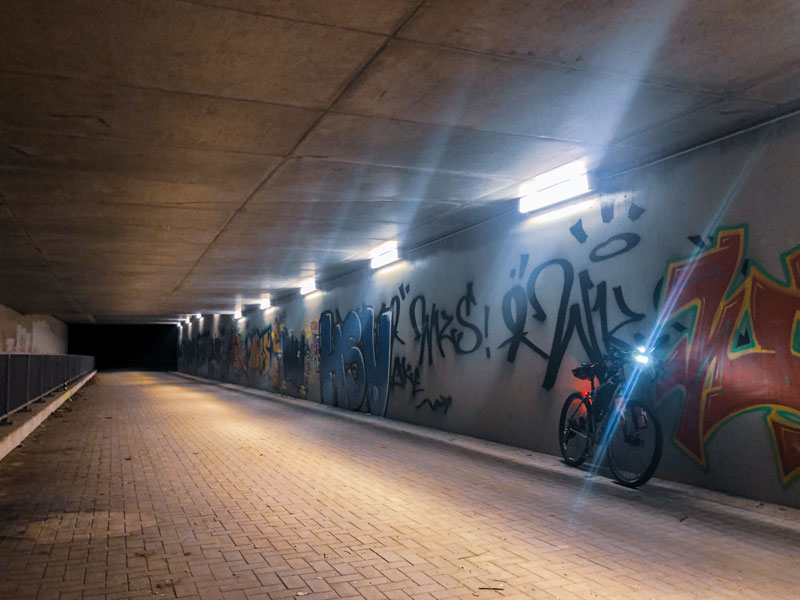
To be on the safe side also one with 180km and one with 270km – in case the motivation on the way then remains but not so high. But actually it was clear to me that I will tackle the 360km, also because this ride fit very well into my current training.
However, a pure gravel route of this length would take a little longer, so I increased the proportion of asphalt passages in Komoot and ended up with a good and time-friendly mix of about 40% gravel and 60% road.
And off it goes…
3 am the alarm rang and shortly before 4 am I was on the bike and off I went. Long distances need early birds. Morning Hamburg was still quite sleepy while I rode north towards Ratzeburg on parts of last year’s Hamburg orbit.
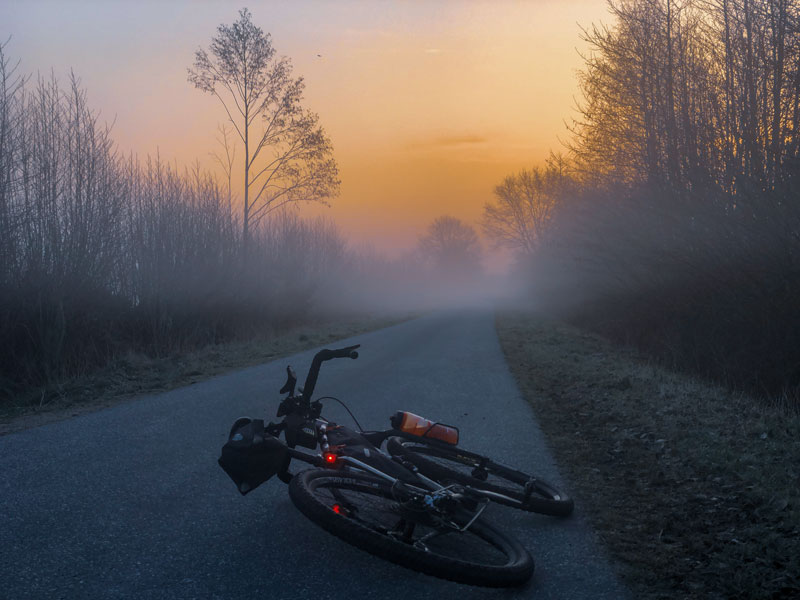
As is often the case, I can’t really say exactly where I rode. However, I was out in the country quite quickly and as the sun rose it bathed the country in quite a wonderful light. There was also a fair amount of fog, which of course added to the romance.
My tactics for the 360km looked as follows: the first 200km leisurely and power well dividing ride, to then have room for improvement on the next 100km, before the last 60km roll down. In addition, every 70/80km a short break with supply at petrol stations.
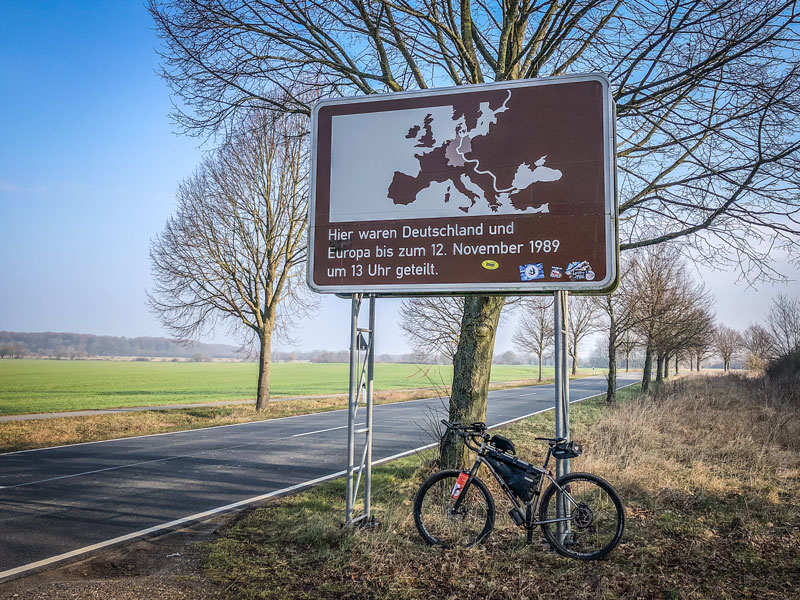
The first part worked out quite well: at kilometer 100 I crossed the former inner-German border. That is always something special for me. A little later I rolled into Schwerin, where I lived until 1981, in the best weather. I quickly left the city behind and crossed Lake Schwerin over the dike, then curved past Kuhlen-Wendorf to Crivitz. Basthorst Schloss was the planning turning point for me, where the route slowly turns west again.
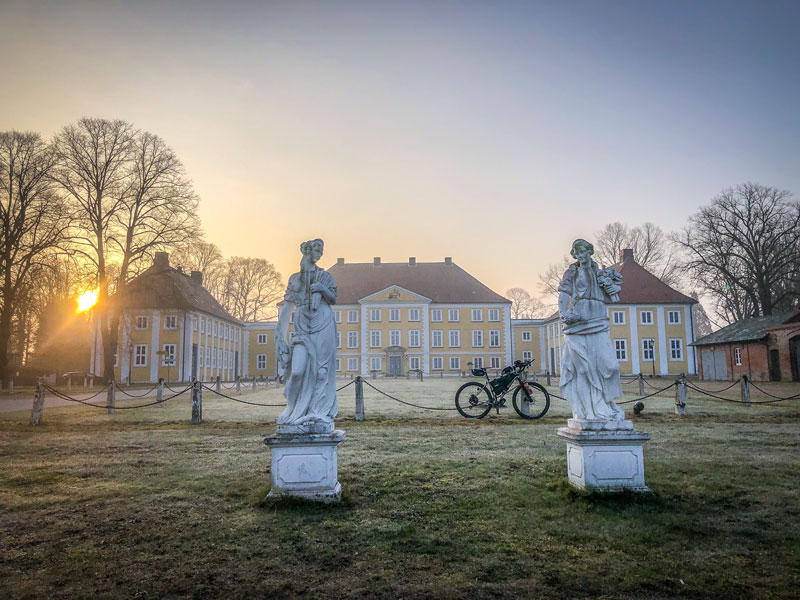
A little later I had the 200km full. Unfortunately, in the meantime a fresh wind from the southwest had set in, into which I now had to turn in order to ride back to Hamburg. This wind cost additional power and I rode many kilometers only in the handlebar attachment. In addition, I was getting tired, which was not conducive. On a sandy dirt road then also my chain got stuck and I needed 15 minutes to fix it again. But that is the salt in the ultra-distance soup.
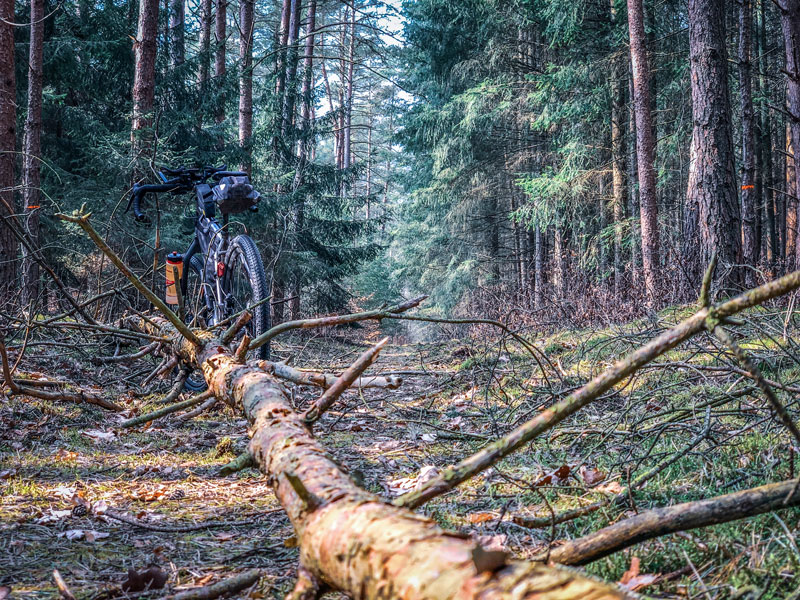
All this did not dampen the mood. The weather was bombastic and at kilometer 300 I was fully fit again, ignored the creaking of the bottom bracket and enjoyed the evening sun. I got faster and faster and rode as if in a frenzy along the Elbe River and Moorburg into Hamburg. Even the stop and go of the Hanseatic city could not spoil my mood – I could have planned the route differently.
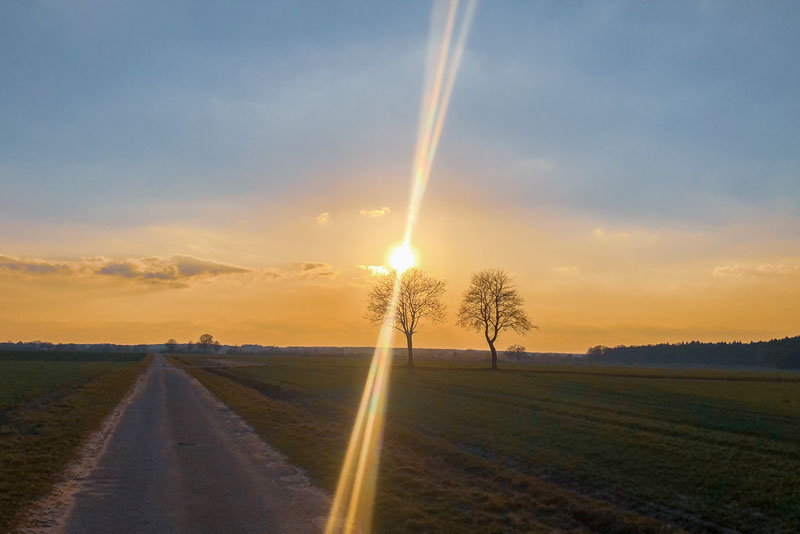
In the dark I finally reached Halstenbek after a ride time of 15 hours and a total time of 16:50:47h. And it was just at the right time, because after I closed the door behind me, it started to rain heavily.
Conclusion
Three hundred and sixty is a decent distance for one day, but if you prepare for an ultra distance event, it should be doable. The pleasant realization was that I could manage it well and could have gone further. And that 180km would have been decidedly too little for me.
Physically the whole thing was no problem. The training of the last weeks paid off and showed effect.
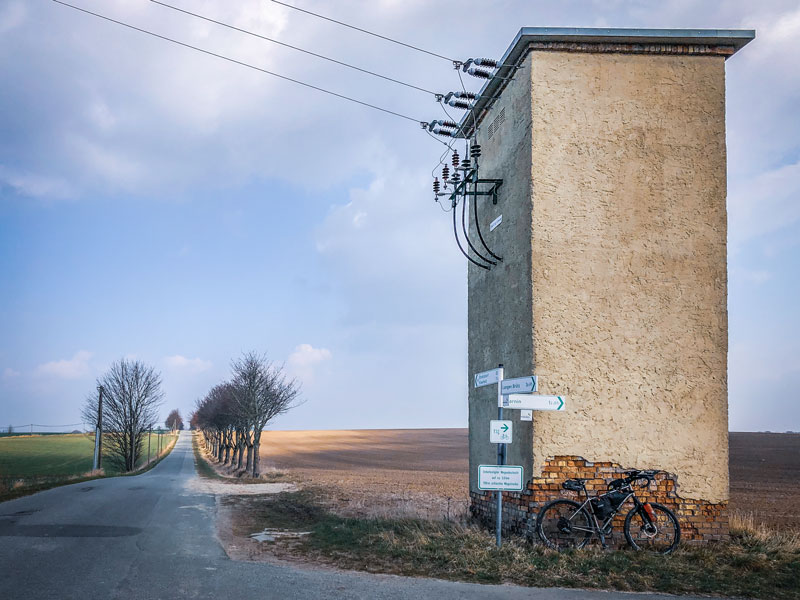
In total I had a standing time of just under 2h. That annoyed me a bit, but could not be changed by the chain problem and the Hamburg city crossing.
5 tips for long distances
Of course some of you are wondering about such distances in one day. Here are a few of my tips and experiences for all who want to dare to ride longer distances:
-
Take it easy
The internet is full of ultra-fit people who ride their bikes quite a bit and then post 500km rides on social media with the comment “Was a nice morning”. Don’t get hot under the collar – they just want to play. And often have nothing else. Don’t get rattled and take an individual approach to the length of the route. If you have ridden 80km so far, try it out with 100km. If you have cycled 120km, try 150km. And so on. Move the limits little by little and above all as it suits you and does you good. And very often it’s more a head thing and not a question of physical performance.
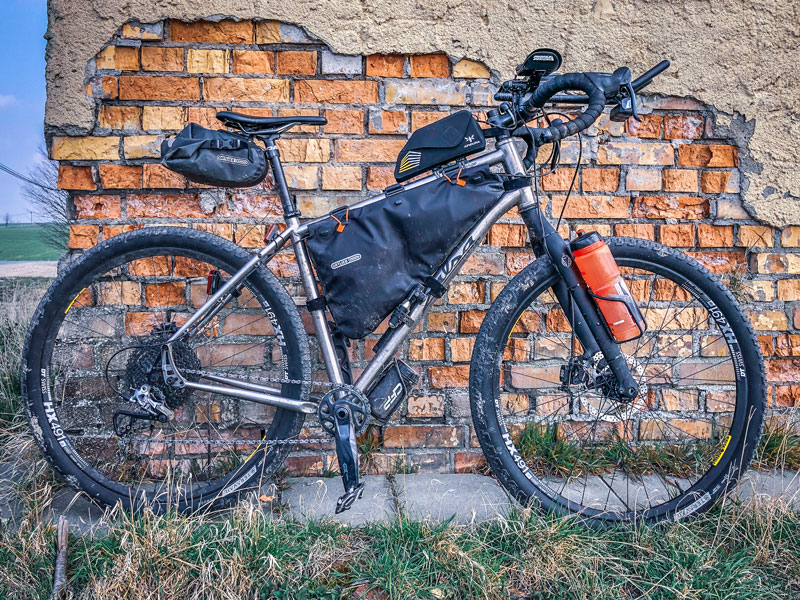
-
Training makes the Difference
For long distances you need time and (mental) resilience. This resilience against pain, effort, fatigue, boredom and the strength for long distances is not something you get overnight, but it can be trained. Besides long rides up to 200km, you can also train your body with interval training to get the appropriate strength and endurance. But the best thing is still: try it out and just ride. And the often so romanticizing “I can indulge my thoughts and find myself” takes place more on Instagram than on the bike. On the road – at least for me – it’s more about when I should eat again, where the next supply point is, how the current hourly average is and how the times are changing, what’s already creaking on the wheel again, that I need to drink and whether the driver in front also sees me and what the navigation system is saying.
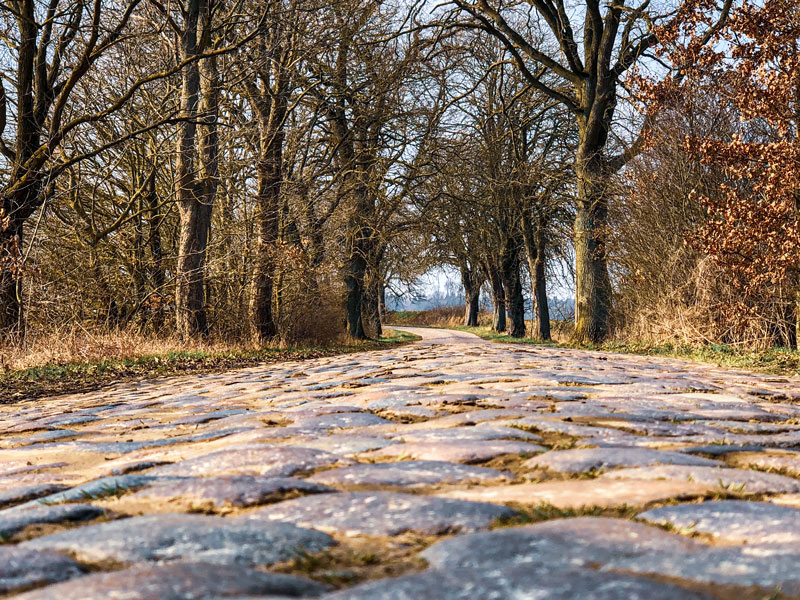
-
Constant Pace wins the Race
Find a pace you feel comfortable with and know (maybe even through training analysis) that you can ride that pace for a long time without burning out. And then ride that way. But that also means being patient. Consistency makes all the difference, because it means you can sometimes last longer and end up faster than others who ride at a higher speed but miscalculate their energy budget and burn out. One would think that this should be clear to everyone who rides such routes. But there are always cases – especially in ultra races – where riders misjudge their performance and then burn out physically and mentally. Probably nobody is immune to this, but you can train to control yourself and to ride accordingly.
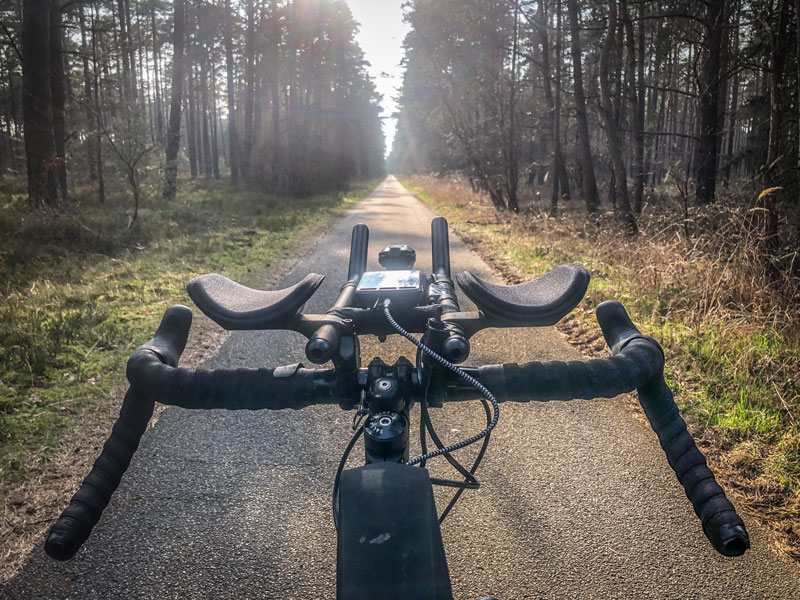
-
Breaks & Recovery
Depending on whether you are riding for time or just because, I have had good experiences with regular 15-20min breaks. Every 75km I schedule such a break, where I then do all the necessary activities, such as eating, drinking, resupply, bike check. However, I have also learned to take breaks while riding. For this I reduce the speed slightly (3-4 km/h) for a few minutes and let it roll down the hill instead of pedaling. That provides some recovery. And for longer distances, an aerobar/handlebar attachment should not be missing. Without this I would have been often “lost”, because I can recover better in this position and at the same time faster. Especially in headwinds this is ideal.
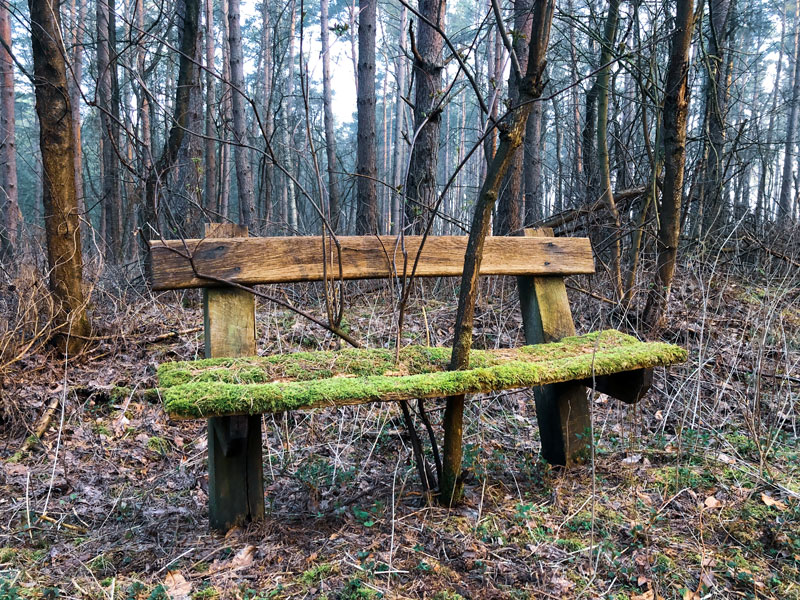
-
Eat, Eat, Eat, Drink, Drink, Drink
Regular refueling is critical when riding such distances. And it’s more than just the espresso and piece of cake on the way out. In fact, you have to eat the whole time, because your body burns a lot of calories during these efforts. I consumed 12,000 Kcal on the 360km. I can’t replenish that with food, of course, but I have to make sure there’s always something to burn. Otherwise it’s over quickly and you run yourself dry. That’s why I always have food with a lot of calories with me and also gels for the kick in between. I have had good experience with wine gums, M&Ms and Mr.Tom. These have a pretty good ratio of quantity and calories. And for the kick in between, Coffee Pocket is a good choice, an espresso in chocolate. And so I nibble all the time, even if I’m not immediately hungry. That’s because through exertion, the body often doesn’t signal the need for calories. Equally important is drinking. Plenty and regularly. Because even a slight lack of fluid goes to the performance. Our musculature consists to a large extent of water and needs for the correct metabolism and function always replenishment. Therefore, I set myself a strict drinking regime and take every opportunity to drink more and guarantee replenishment.
I usually drink an isotonic mix (some iso powder from dm) and whenever possible cola. For me, coke is pretty dandy when it comes to helping with digestion. When cycling, you’re often in the bent-over position, which isn’t always good when eating and can cause stomach distress. I have made the experience that cola, in addition to the caffeine and sugar kick, also helps to dissolve the food faster. (Note: that cola has a disintegrating effect but should be a myth).
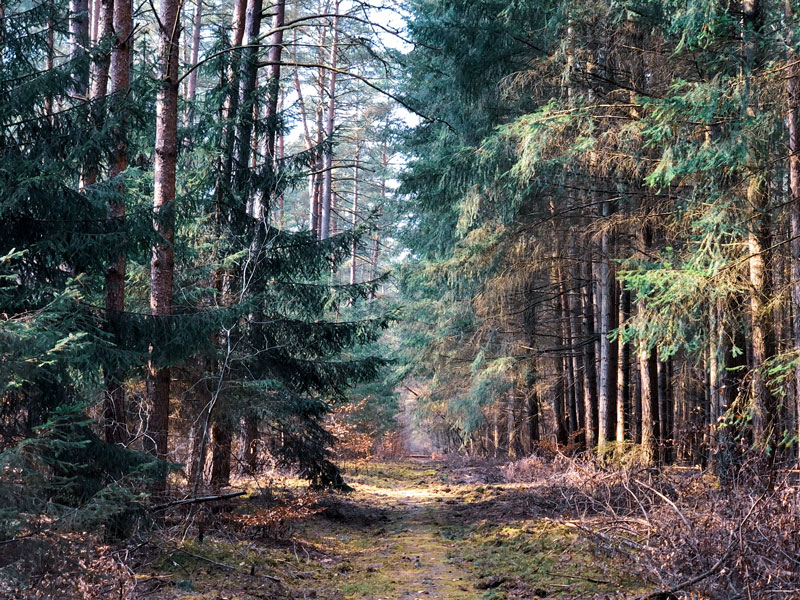
Certainly there are many other things to consider, such as the right clothing or the further mental attitude. Maybe you have some tips from your experience that you would like to share here?
But: Do you have to ride 360km?
No, 180km is perfectly fine too. 🙂 Joking aside: the 360 stands for any distance you personally set as your goal. It’s not about the length and whether others ride more and faster. It’s about the fun of challenging yourself, pushing your limits and cycling. And if I can do something good and support Raphael and the projects, then it’s clearly a win:win.


